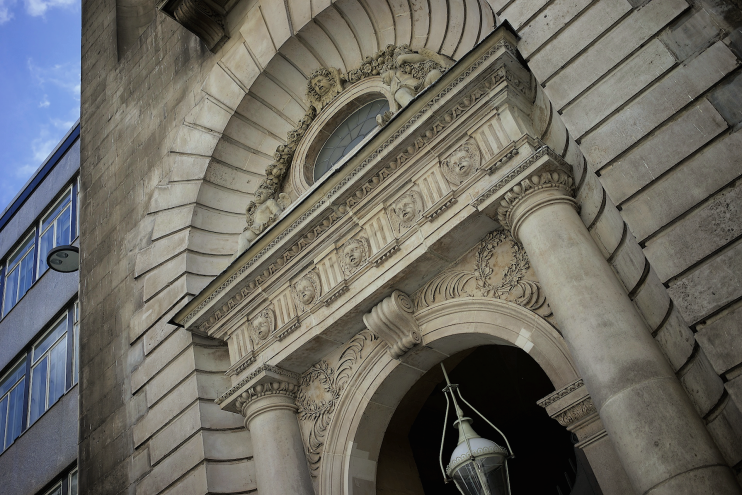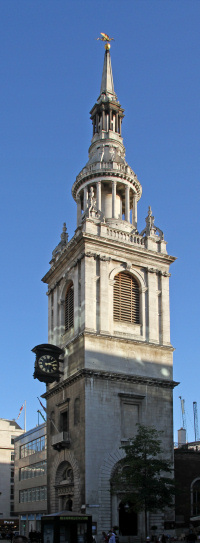Cheapside
Cheapside, City of London
The City of London’s main shopping street for the past millennium, running eastward from St Paul’s towards Bank

Cheapside takes its name from ‘chepe’, a Saxon word for a market. The street connected the southern end of the Roman Watling Street with the main City settlement to its east and its alignment was dictated by a convenient bridging point across the (now subterranean) River Walbrook.
The first church of St Mary-le-Bow was built c.1080 by Archbishop Lanfranc, and may have replaced a church of Saxon origin. Its name probably refers to the bowed shape of the arches supporting its undercroft, which were a novelty at that time.
Market buildings were constructed along the roadside from the late twelfth century, with low roofs that later formed viewing platforms for jousting tournaments. At that time the layout of Cheapside was more like a marketplace than a street: up to 62 feet wide but with very narrow exits at each end. Side streets acquired names that indicated their early specialisations: fishmongers traded on Friday Street, while Honey Lane, Milk Street and Wood Street are self-explanatory.
Another side street, Gutter Lane, was first recorded around 1185 as Godrun Lane – the lane of a woman called Guthrún – and had become corrupted to its present form by the 15th century. This was an early place of residence for the City’s goldbeaters. ‘Gutter Lane’ was formerly a slang term for the throat, a pun on Latin guttur, ‘throat’, as in ‘guttural’.

Cheapside itself became the centre of the jewellery trade, where most London goldsmiths sold their wares, but it was destroyed in the Great Fire of 1666. It was laid out afterwards with the bottlenecks removed, forming a continuous link with Poultry, the connecting street to its east.
Sir Christopher Wren rebuilt St Mary-le-Bow in 1680, with a tower that used the Roman gravel roadway as its foundations. By tradition, a true cockney must be born within the sound of the church’s bells.
It took some time for Cheapside to recover from the economic effects of the Great Fire but over the course of the 18th century it regained its prestigious status and in 1775 a visitor observed that with its “many thousands of candles … the street looks as if it were illuminated for some festivity,” although this was just for everyday trade.
Most of the street was rebuilt with blocks of offices from the late 19th century, with shops retained at street level.
The Cheapside Hoard, a remarkable collection of early 17th-century jewellery, was discovered in 1912 buried in the cellar of a property at the junction of Cheapside and Friday Street.
When Sir John Bennett’s clock shop closed in 1931, motor manufacturer Henry Ford acquired both the building and its famous clock and shipped them to Dearborn, Michigan, where the shop was (partially) reconstructed as part of the Greenfield Village visitor attraction.
In 1933 a commentator wrote that “dingy-looking brown buildings have been replaced by tall and handsome buildings which give Cheapside the appearance of a new street.”
History did not look so kindly on most of these “handsome buildings” – nor on those erected following the destruction wreaked during the Second World War. Several blocks have recently been replaced once again, bringing more office space and even more retailers and eateries, notably at One New Change.
Thomas More, statesman and author of Utopia, was born in Milk Street in 1478. Just across Cheapside, Bread Street was the birthplace of two poets, John Donne and John Milton.
